I decided to do some research into influential directors in both today's film industry and the past. Directors can change the way films are made forever if they cross boundaries and break conventions and yet still create a highly successful film. Many people base their decisions as to whether to watch a film or not on who has directed the film. This is because they can look back at past films they have created and use this to judge whether the film that they want to watch will be good or not. Here are a few directors that really stood out when i was doing my research and many of them are household names amongst both the old and the young.
Tim Burton
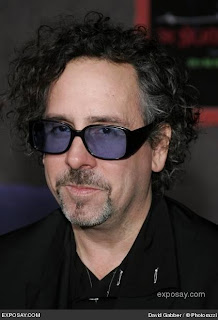
Born August 25th 1958. Many people believe him to be the most quirky director of all time. He produces films that have a slight dark and gothic undertone with plots that focus around misfits and outsiders, both physically and mentally, which is a highly unusual thing in the media industry as we tend to prefer to hear about and watch perfect people.
From an early age Tim became very interested in film and the media industry. He found school and life in general very difficult to deal with and in interviews have told people that he escaped from real life by watching various dark horror movies and low budget films. Both Ray Harryhausen's and Vincent Price's films were hugely influential to his career and after school he won a disney scholarship to California Institute of the Arts where he took an animation course. He, however, didn't enjoy his experiences there as his drawings did not fit with the conventional Disney characters as they were too individual.
His first ever movie that he made was 6 minutes long and called Vincent. It was about a young boy who fantasized about being his idol, Vincent Price which was highly ironic as Tom Burton's childhood idol was Vincent Price too. After this there were many ups and downs in Tim's career before he was able to become a recognizable name. The first thing that Tim directed that was a huge mainstream hit was Pee-Wee's Big Adventure. It was made on a budget of $7 million dollars but yet managed to make $20 million at the box office, therefore making a huge profit and becoming highly successful.
After this breakthrough Tim went on to create many successful films that are extremely recognizable to the general public as being unique but yet truely epic films. Some of these films include Charlie and the Chocolate Factory, The Nightmare Before Christmas and Edward Scissorhands. All of these films were successful and are still being watched often, over and over again as they are considered classics.
Tim Burton's most recent project to embark on is the remake of Alice in Wonderland set to be released in 2010. He has used a range of well known actors and actresses to play the roles with Johnny Depp starring as the mad hatter and Helena Bonham Carter as the Queen of Hearts.
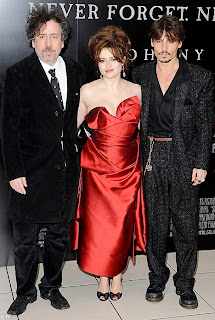
Both these stars appear in many of Burton's films with Johnny Depp being in many films such as
Sweeny Todd- The Demon Barber of Fleet Street, The Corpse Bride and Helena Bonham Carter being in films such as The Planet of the Apes and Sweeny Todd - The Demon Barber of Fleet Street as they have gained a strong relationship with him and Johnny Depp describes him as 'a brother, a friend, my godson's father' which shows a bond that not many actors are ever able to have with the director. This shows a real uniqueness about Tim Burton and leads me to believe that despite him being a great director, a lot of his success comes from the friendships he has made growing up and how he uses these friendships to his advantage.
Steven Spielburg
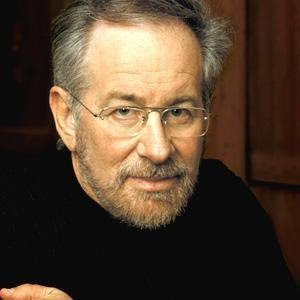
Born December 18th 1946, Steven Spielberg has lived his life and built up an incredible reputation for himself as a director and a person in general. He has been producing box office films since the 1970's and is still going now, producing some well known classics along the way such as Jaws and ET. In 2006 the magazine 'Premiere' named him "the most powerful and influential figure in the motion picture industry" and 'Time' magazine listed him as one of the '100 Greatest People of the Century'. He has not produced copies of the same film and plot lines to make his success, instead he has produced films across many different genres and touched many different themes and that is why he is so highly thought of.
Speilberg began directing when he was in his early teens. He started off making short home adventure movies with his friends which he charged 25 cent admission for them to see. He had already begun making money out of his directing and found it was something he truly loved. Later he used his directing skills to earn him a photography merit badge at Boy Scout's by making using a video camera to tell a story instead of a still one.
At 13 Speilberg won his first prize for directing a 40 minute war movie called Escape to Nowhere and at 16 he wrote and directed his first independent movie Firelight which made $100 profit when it was aired in his local cinema.
Later on in his life Steven Spielberg became a 7-day a week unpaid intern at Universal studios. It was here that he made his first short film for theatrical release called Amblin'. After watching the film, the vice president of production for Universal's TV arm, Sidney Sheinberg, signed Spielberg up to be a television director at Universal studios, therefore making him the youngest director ever to be signed a long-term deal with a major Hollywood studio. It was here that his professional directors career took off.
The first movie that Speilberg directed professionally was called Duel about a monsterous tanker truck which tries to run a small car off the road, however his debut theatrical film was called The Sugarland Express about a married chased by the police. Despite it not being successful at the box office, reviewers noticed the skill of Spielberg's directing and described him as "a major new director is on the horizon".
Steven Spielberg was then given the directing chair for the horror film Jaws. It was a huge success and turned Spielberg into a household name over night. The film won 3 Acadamy Awards and grossed a record-breaking $470,653,000 at the box office. From this Steven became one of America's youngest multi-millionaires and this cash helped him on future projects.
Steven Spielberg later went on to direct well known films such as
Indiana Jones and
Jurassic Park and has been nominated and won many awards for his work. He is still directing films to this day with some of his most recent work grossing big money in the box office and his future projects set to be huge blockbusters. One of his most recent projects he is embarking on is
Transformers: Revenge of the Fallen, the sequel to the hit science fiction film
Transformers. It is said that this one will follow in the footsteps of the first one and make just a big an impact on its audience. Once again it has Shia LaBeouf and Megan Fox starring as the lead roles.

Spielberg's filmography is an endless list of big hits and amazing plot lines that makes him a truly inspirational character. The way that he can continue to produce these timeless films makes him extraordinary and this is why i believe he is one of the most influential directors to ever live.
Alfred Hitchcock

Born 13th August 1899 was an iconic and influential British director. During his life he directed over 50 feature films and had a career spanning for six decades. His work adapted as times changed and he successfully managed to produce films through the silent era right into the colour era. Despite his death he still remains one of the most well-known successful directors ever.
When Hitchcock was a boy much of the treatment he incurred from his father and mother is reflected in his films and some of the characters are inspired by their behavior. After Hitchcock graduated he became intrigued by photography and began to work in film production in London. He begun working as a title card designer for Paramount Pictures but later went on to recieve a full time position at Islington Studios where he designed titles for silent movies.
Alfred's work led him to Germany in 1924 and it was there that he co-wrote the film Die Prinzessin und der Geiger. It was in Germany that he had the chance to direct his first film, The Pleasure Garden but it was so unsuccessful that it threatened his career as a movie director and forced Alfred Hitchcock to bounce back. He came back with his debut film influenced by expressionist techniques that he witnessed in Germany, The Lodger: A Story of the London Fog which was a major success.
After this he then went on to direct many successful films, one of his earliest ones being The 39 Steps which is often considered one of the best films from his early period. After having a huge directing success in the UK he decided to risk his luck in America and moved to the United States to persue his directing career. It was here that Hitchcock directed his iconic successes The Birds and Psycho along with many other major movies that are still watched to this day.
The last film that Hitchcock had hoped to direct was called The Short Night but sadly Hitchcock was unable to do this before his death. Instead the script was published posthumously in a book about his last few years.
Alfred Hitchcock died in 29th April 1956 from renal faliure in Bel-Air, Los Angeles, California at the age of 80. It was sad to see such a talented director die but he lived a good, long, happy life with his wife Alma Reville and daughter Patricia Hitchcock O'Connell.
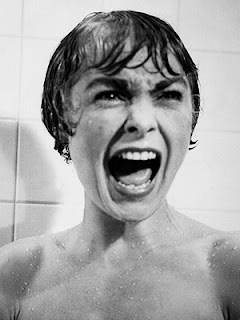
Alfred Hitchcock's films draw heavily on both fear and fantasy. His heroines tended to be lovely blondes who seem proper but when put in a dangerous situation react in a surprising, almost animal like way and many of his films showed a struggling relationship between mother and child, often thought to reflect his own relationship. His movies nominated him for many Oscars, some of which, such as Best Picture, he won. Throughout his life he directed many films that to this day are still watched by audiences worldwide so therefore he lives on through the grave as a successful director.
Woody Allen
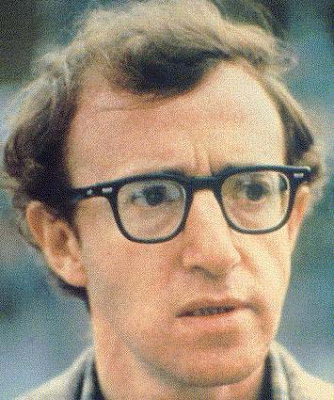
Born December 1st 1935, he is one of the world's best known directors and actors. His films have made him one of the most respected American directors of all time and holds a very large body of work. He gets his inspiration for his films from literature, sexuality, philosophy, psychology, Jewish identity, European cinema and New York City, where he was born and lived his entire life so he knows it very well.
When Woody was young he was a very comical character and for this reason was popular amoung his class mates. He began writing gags for the agent David O Alber, who sold them to newspaper colomnists, to raise money. At the tender age of 16 Woody was first discoveredby Milt Kamen reading his jokes in the newspaper and was given his first writing job. It was then that he changed his name from Allen Stewart Konnigsberg to Woody Allen. He later went to New York University where he studied communication and film. He was never a very commited student as he had his mind on other things which is why he surprisingly failed his film course and was eventually expelled.
Although his breakthrough film was called What's New Pussycat? he was only involved in the writing and acting of this film. The first film that Woody directed was called What's Up, Tiger Lily? in 1966 in which a dramatic Japanese spy movie was redubbed in English with comical new dialogue. After this he went on to create many well known films such as Take The Money and Run, Everyone Says I Love You and Manhatten, which was a black and white movie set in New York City which was said to be the main charcter of the movie as it was depicted so well and made the audience focus on it. In many of these later films he starred in, directed and wrote or co-wrote which made him stand out from many other directors of that time. One of his most recent Hollywood blockbusters was Match Point starring Scarlett Johansson and Jonathan Rhys-Mayers. It is one of his most successful modern films made in 2005, grossing more than $62 million in the international box offices. It was a unique piece for Allen as he moved his focus from the the streets of New York city to focus on the upper class society of London. This shift payed off as the film was nominated for best directing and writing at the Golden Globes and and Acadamy Award for best writing, his first since 1998. When Allen was interviewed by 'Premiere' magazine he stated that it was the best film he had ever made.
During his career Woody Allen has been nominated for and won many awards for his directing, acting and writing, all of which he are equally as skilled at. Some people have written films and stories about him due to his fascinating and successful life. His love for jazz music features a lot in his films and he named his two adopted children with wife Soon-Yi Previn after two famous Jazz musicians, Sidney Bechet and Manzie Johnson.

Allen's latest film he is directing is called Whatever Works. It is aimed more at the older audiences and stars Evan Rachael Wood, Emma Thompson and Larry Davis. It is set to be released in 2009.
The extraordinary thing about Woody Allen is that he is not only focussed on the directing of his films but he also stars in them and is involved in the acting. He is a man of many talents and thats what makes him stand out from other directors. Everything he does he does successfully despite all the hard work and effort involved. He has built up a respected image for himself and that is why i think he is one of the most influential directors of all time.
Martin Scorsese
 Born November 17th 1942, Scorsese is a acadamy award winning American film director. His work is based heavily on contraversial issues such as Italian American identity, Roman Catholic concepts of guilt and redemption, machismo and the violence endemic to American society. Martin Scorsese is named one of the most significant and influential film makers of his era and as earned himself an MFA in film directing from NYU's School of Arts. He is the founder of the World Cinema Foundation and has recieved the AFI Life Achievement Award for his contribution in film. These along with many BAFTA's, Golden Globes and being the president of the Film Foundation make Martin a cut above the rest and truly stand out as an outstanding director.
Born November 17th 1942, Scorsese is a acadamy award winning American film director. His work is based heavily on contraversial issues such as Italian American identity, Roman Catholic concepts of guilt and redemption, machismo and the violence endemic to American society. Martin Scorsese is named one of the most significant and influential film makers of his era and as earned himself an MFA in film directing from NYU's School of Arts. He is the founder of the World Cinema Foundation and has recieved the AFI Life Achievement Award for his contribution in film. These along with many BAFTA's, Golden Globes and being the president of the Film Foundation make Martin a cut above the rest and truly stand out as an outstanding director.
Martin was born and raised in New York City by his father, a clothes presser and his mother, a seamstress. When he was a child his father often took him on regular visits to the movie theatre and it was at this stage in his life that he found his love for cinema. At this age he developed a passion for neo-realist cinema and has later said that The Bicycle Thief, Paisa, Rome and Open City all inspired him and influenced his way of thinking towards his Sicilian heritage. Scorsese originally wanted to be a priest but this was soon taken over by his interest in film. He attended the NYU Film School and it was here that he won his MFA in film directing in 1969.
During his time at the NYU Film School he made many short films such as What's A Nice Girl Like You Doing In A Place Like This? and The Big Shave which was one of his most famous short movies of that time. At the same time as making these short movies he was also producing his first feature length film. It was a black and white movie called Who's That Knocking At My Door and was about a trouble male protagonist. This was the start of what was to come, showing off a unique "Scorsese style" that would be used in many of his later films.
During the 1970's, Martin made another film called Boxcar Bertha which although wasn't a huge sell out, taught Scorsese the vital lessons he needed to learn, how to make movies quickly and cheaply which set him on his way to making his first major box office movie, Mean Streets which starred famous actor Robert De Niro. The two have been collaborating ever since and are now firm friends. 
After this breakthrough, he directed several other successful movies that were just as big in the box office such as Taxi Drivers and Goodfellas. All of his films featured the typical "Scorsese style" with the macho posturing, bloody violence, gritty New York mise-en-scene, Catholic guilt and redemption, rock soundtrack and speedy editing and he became well known for this individual style. In a way these became his conventions that he had to follow when making a film otherwise it would not live up to the audiences expectations.
Some of Scorsese's more recent movies include The Aviator and Gangs of New York which were both highly successful and nominated for many awards, most of which were for best director. In the future Scorsese is said to be working on a piece based on Shusaku Endo's masterpiece novel, Silence, about two Portuguese Jesuits amoung persecuted Christians in 17th Century Japan. It is said to be released in 2010 but no more is being revealed.
Over the years Scorsese has built up an impressive portfolio of work with big hit films in the box office all the time grossing huge amounts of money and many awards to show off his talents. It would be an understatement to say that Scorsese is just another talented director as i feel his skills are far more impressive and influential than many other directors and that is why i believe him to be one of the most influential directors.
The Coen Brothers

Joel Coen born November 29th 1954 and Ethan Coen born September 21 1957 are known professionally as 'The Coen Brothers'. Although they both direct and produce their films together, up until recently Joel recieved credit for directing and Ethan for producing. In the film industry they are known to many as 'the two headed director' as they hold very similar visions with films and when questioned they both give the same answer. Although people may believe that sharing the same career as your brother may not be the best thing, it has proven that you can achieve great success and to allow equality when it comes to crediting films, they sometimes label themselves under the joint name Roderick Jaynes.
When they were boys, Joel was the first brother to begin his journey to becoming a director. He used to mow peoples lawns in their neighborhood to get money for his Vivitar Super 8 camera. Once he had earned enough money the brothers collaborated with another neighborhood friend and they begun making remakes of movies that they had seen on the television.
After they graduated from their High School, Joel went on to become an undergraduate in a film program at the New York University where he made a 30 minute thesis film called Soundings. Ethan, however, went to Princeton university where he earned an undergraduate philosophy degree. Once Joel had graduated he became a production assistant for industrial films and music videos. It was here that he gained a talent for film editing.
In 1984, the brothers wrote and directed their first film together called Blood Simple. It was about a bar owner who hires a private detective to kiss his wife and her lover. It recieved much well deserved praise when it was released and won awards for Joel's directing at the Sundance and Independent Spirit awards. This movie was a glimpse into what was to come of the Coen brothers.
Since their first success they have continued to write and direct movies together. Some of their most well known ones are Barton Fink, which gained many Oscar nominations and won 3 major awards at the Cannes Film Festival, and No Country For Old Men, which was also nominated for many awards and won 4 Academy Awards. Another of the Coen brothers films that has just hit the big screen was called Burn After Reading. It is a black comedy starring Brad Pitt, John Malkovich and George Clooney about an ousted CIA official's memoir accidently falling into the hands of two unwise gym employees intent on exploiting their find. In its opening weekend the film grossed $19.1 million in the USA and Canada ranking first at the box office. Since then that has increased to a staggering $51.64 million and is still extremely popular in cinemas worldwide.
The brothers have a few more films up their sleeves that they are planning to release in the future. One is called A Serious Man which is said to be based loosely on their own childhoods. They are currently filming it at the moment and hope to release it in 2009. Another project they are set to embark on is the remake of the 1969 film True Grit which will begin to be made in 2010. 
Overall i think the brothers prove that two heads are better than one and that great minds really do think a like. Many people argue that they have it easy because they are a team but i feel that true success is just as hard to achieve both on your own and in a team and i think they have become very successful, producing many outstanding films. I think they are two extraordinary individuals and together they are even more inspirational.
Quentin Tarantino
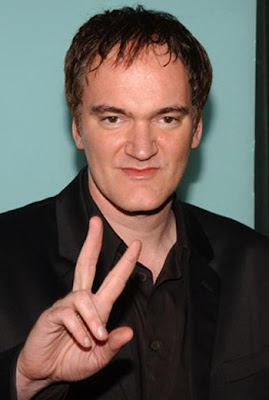
Born March 27th 1963, Quentin Tarantino is a legendary film director all around the globe. He rose to fame in the early 1990's as a filmmaker who broke the boundaries. He used non-linear storylines and aestheticization of violence. Since his breakthrough he has just become more and more famous producing many well known films. His hard work has earned him many Acadamy, BAFTA, and Palme D'or awards and nominations for both Emmy's and Grammy's. Along with these he was also named 12th greatest director of all time in 2007 by 'Total Film' magazine.
Son of Tony Tarantino, an actor and amateur musician, he always had the film industry in his blood. At the age of 16 Tarantino dropped out Narbonne High School in California and went on to learn acting at the James Best Theatre Company. This section of his life was highly influential in his movie making career. At the age of 22 he then went on to get himself a job at Manhatten Beach Video Archives where he spent all day discussing and recommending films to customers.
Tarantino later met Lawrence Bender at a Hollywood party, who encouraged him to write a screenplay. This encounter led to the release of Quentin's film
Reservoir Dogs at the Sundance Film Festival in January 1992. Although Quentin wasn't the sole director of this hit film, he wrote the script in 3 and a half weeks and begun him on the road to success as his name became globally recognized as the film was so critically acclaimed. After this he was offered many directing opportunities for films such as
Speed and
Men in Black but he turned all of them down so that he could move to Amsterdam and work on the script for his second major hit film,
Pulp Fiction which was released in 1994 and once again became hugely popular worldwide.
Since these two major movies, Quentin has gone on to direct other major box office hits such as
Kill Bill Volumes 1&2. It was a 'revenge flick' in the cinematic style of Chinese martial arts, Japanese period cinema, Spaghetti Westerns and Italian horror. It was based upon a character and plot that himself and leading actress, Uma Thurman, had developed during the making of
Pulp Fiction. 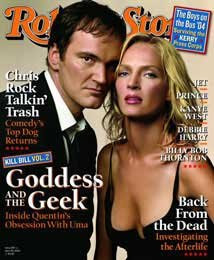
At the moment Tarantino is currently working on a project called
Inglorious Basterds said to be released in 2009. It is the story of a group of guerilla U.S. soldiers in Nazi occupied France during the 2nd World War. It is set to be just as big a hit as his many other films.
As well as being a tremendous and quirky director, Tarantino also writes, produces and acts in many of his films. This shows that he plays a huge part in the media industry and is a highly talented man. His life revolves around film and television and he continues to make films that are popular now and will be for a long time to come with both the young and old generations. I think this along with his skills make him one of the most influential directors of our time.


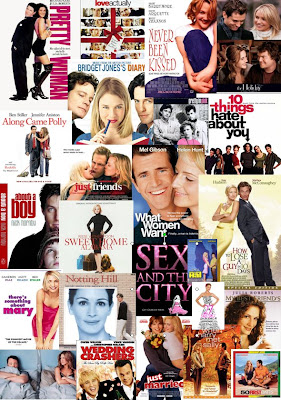
 Born August 25th 1958. Many people believe him to be the most quirky director of all time. He produces films that have a slight dark and gothic undertone with plots that focus around misfits and outsiders, both physically and mentally, which is a highly unusual thing in the media industry as we tend to prefer to hear about and watch perfect people.
Born August 25th 1958. Many people believe him to be the most quirky director of all time. He produces films that have a slight dark and gothic undertone with plots that focus around misfits and outsiders, both physically and mentally, which is a highly unusual thing in the media industry as we tend to prefer to hear about and watch perfect people. Both these stars appear in many of Burton's films with Johnny Depp being in many films such as
Both these stars appear in many of Burton's films with Johnny Depp being in many films such as  Born December 18th 1946, Steven Spielberg has lived his life and built up an incredible reputation for himself as a director and a person in general. He has been producing box office films since the 1970's and is still going now, producing some well known classics along the way such as Jaws and ET. In 2006 the magazine 'Premiere' named him "the most powerful and influential figure in the motion picture industry" and 'Time' magazine listed him as one of the '100 Greatest People of the Century'. He has not produced copies of the same film and plot lines to make his success, instead he has produced films across many different genres and touched many different themes and that is why he is so highly thought of.
Born December 18th 1946, Steven Spielberg has lived his life and built up an incredible reputation for himself as a director and a person in general. He has been producing box office films since the 1970's and is still going now, producing some well known classics along the way such as Jaws and ET. In 2006 the magazine 'Premiere' named him "the most powerful and influential figure in the motion picture industry" and 'Time' magazine listed him as one of the '100 Greatest People of the Century'. He has not produced copies of the same film and plot lines to make his success, instead he has produced films across many different genres and touched many different themes and that is why he is so highly thought of. 
 Born 13th August 1899 was an iconic and influential British director. During his life he directed over 50 feature films and had a career spanning for six decades. His work adapted as times changed and he successfully managed to produce films through the silent era right into the colour era. Despite his death he still remains one of the most well-known successful directors ever.
Born 13th August 1899 was an iconic and influential British director. During his life he directed over 50 feature films and had a career spanning for six decades. His work adapted as times changed and he successfully managed to produce films through the silent era right into the colour era. Despite his death he still remains one of the most well-known successful directors ever.
 Born December 1st 1935, he is one of the world's best known directors and actors. His films have made him one of the most respected American directors of all time and holds a very large body of work. He gets his inspiration for his films from literature, sexuality, philosophy, psychology, Jewish identity, European cinema and New York City, where he was born and lived his entire life so he knows it very well.
Born December 1st 1935, he is one of the world's best known directors and actors. His films have made him one of the most respected American directors of all time and holds a very large body of work. He gets his inspiration for his films from literature, sexuality, philosophy, psychology, Jewish identity, European cinema and New York City, where he was born and lived his entire life so he knows it very well.
 Born November 17th 1942, Scorsese is a acadamy award winning American film director. His work is based heavily on contraversial issues such as Italian American identity, Roman Catholic concepts of guilt and redemption, machismo and the violence endemic to American society. Martin Scorsese is named one of the most significant and influential film makers of his era and as earned himself an MFA in film directing from NYU's School of Arts. He is the founder of the World Cinema Foundation and has recieved the AFI Life Achievement Award for his contribution in film. These along with many BAFTA's, Golden Globes and being the president of the Film Foundation make Martin a cut above the rest and truly stand out as an outstanding director.
Born November 17th 1942, Scorsese is a acadamy award winning American film director. His work is based heavily on contraversial issues such as Italian American identity, Roman Catholic concepts of guilt and redemption, machismo and the violence endemic to American society. Martin Scorsese is named one of the most significant and influential film makers of his era and as earned himself an MFA in film directing from NYU's School of Arts. He is the founder of the World Cinema Foundation and has recieved the AFI Life Achievement Award for his contribution in film. These along with many BAFTA's, Golden Globes and being the president of the Film Foundation make Martin a cut above the rest and truly stand out as an outstanding director.














 Captain Jack Sparrow was played by Johnny Depp in the films 'The Pirates of the Caribbean'. Many people believe that he made the films the successes they were as he took playing the role to a unique level basing it on the edgy rock star, Keith Richards.
Captain Jack Sparrow was played by Johnny Depp in the films 'The Pirates of the Caribbean'. Many people believe that he made the films the successes they were as he took playing the role to a unique level basing it on the edgy rock star, Keith Richards. Tom Hanks played the character of Forrest Gump in the successful comedy film 'Forrest Gump'. It was both emotional and laughable at the same time due to the character of Forrest and the acting of Tom Hanks to create such a deep character. The film is based around the life of Forrest Gump as he is not a regualar human being as he does not hold the same intellegence as them. Tom Hanks creates a character which is truely fascinating and keeps you watching for hours.
Tom Hanks played the character of Forrest Gump in the successful comedy film 'Forrest Gump'. It was both emotional and laughable at the same time due to the character of Forrest and the acting of Tom Hanks to create such a deep character. The film is based around the life of Forrest Gump as he is not a regualar human being as he does not hold the same intellegence as them. Tom Hanks creates a character which is truely fascinating and keeps you watching for hours.
 For my first clip i chose to watch the
For my first clip i chose to watch the  The second scene i chose to look at was from
The second scene i chose to look at was from 